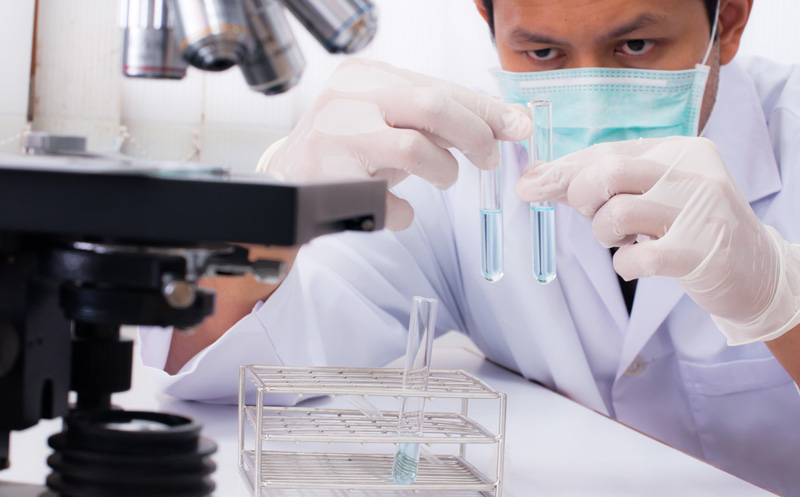For centuries, we have sought cures for depression. Some discoveries, such as psychotherapy and medication treatment, are now widely accepted. But they don’t work for everyone. More recently, an unorthodox drug has garnered attention as a new, possible intervention: ketamine.

Classified as a mental health disorder, depression can also affect physical health, negatively impacting most of the body’s systems. Compared to pre-pandemic reporting, depressive symptoms among adults in the United States tripled during the COVID-19 pandemic.
Depression is often treated with pharmaceutical antidepressants, but they have their limitations. Most antidepressants, like Prozac, are selective serotonin reuptake inhibitors (SSRIs). About 30% of adults with depression don’t respond to SSRIs. That’s because SSRIs target less than 20% of the neurotransmitters in a person’s brain, and the 80% that are left untreated are believed to be responsible for regulating most brain activity, including mood.
It’s clear that new pharmaceutical treatments for depression are necessary. This is where ketamine emerges as a possible candidate. While classified as a Schedule III non-narcotic substance and typically only used for anesthesia, there are now medical exemptions for ketamine use for mental health diagnoses, with new research showing promise in successful treatment of depression and suicidality, though not without notable risk.
How it Works
Some say ketamine is a “miracle drug.” So, what makes it different from other treatments?
On a clinical level, ketamine works fast and well. As a rapid acting antidepressant, users experience same-day relief after an infusion, with measurable effects three to four hours after treatment. Low-dose infusions can last five to seven days, with high-dose infusions lasting even longer. Repeated injections have shown to successfully decrease suicidal ideation by 69%, a groundbreaking discovery given that suicide remains a leading cause of death in the United States.
On a biological level, ketamine triggers glutamate production, allowing the brain to forge new neural pathways, including new positive thought patterns. Ketamine is also believed to reduce inflammation and promote the regeneration of connections between brain cells damaged by stress, which has been linked to mood disorders.
There are two types of ketamine used for depression, often administered in conjunction with antidepressants. Ketamine can be administered by nasal spray, infusion, intramuscular shot, or sublingual lozenge. Except when in lozenge form (a much lower dose), ketamine can only be administered in monitored clinical settings.
Risks
Using ketamine to treat depression isn’t risk-free. In fact, it can be quite risky for some. The potential side effects emphasize the importance of treatment being administered by a trained clinician.
Ketamine is a dissociative drug that can distort a user’s sensations and increase feelings of detachment from the environment and self. Possible side effects range from nausea and vomiting to “out-of-body” catatonic experiences, often referred to as “k-holes,” which can include hallucinations and the inability to speak or move. Some research suggests that regular ketamine use can lead to ongoing dissociative and psychotic symptoms. Further study is needed to determine the risks of frequent dissociative experiences, even with clinically appropriate dosages.
There is also risk of addiction and abuse, especially when administered outside a clinical setting. Fortunately, there is a limit to how much ketamine an individual can absorb sublingually, making it nearly impossible to overdose when taken in lozenge form.
Demand
In light of the promising benefits – and despite the potential risks – demand for ketamine treatment for depression has boomed. When a new ketamine nasal spray went on the market in 2019, over 6,000 Americans used it within the first year. The demand has also resulted in the emergence of hundreds of new ketamine wellness centers across the country.
Some patients even have pre-measured doses of ketamine shipped directly to their homes. Mindbloom, a company at the forefront of at-home services, recently conducted (and sponsored) the largest evaluation to date on the safety and effectiveness of at-home ketamine kits for depression and anxiety, with over 1,200 participants. Participants benefited from the same rapid and significant positive effects at rates consistent with clinically administered ketamine treatment. At the same time, there is little oversight for at-home treatment kits, which introduces warranted concerns considering ketamine’s potential risks.
Using ketamine to treat depression and other mental health conditions is still in its early stages. While the benefits of ketamine look promising and have successfully treated some, the associated risks are significant and need to be better understood. Ketamine itself is not a cure and should always be a part of a comprehensive treatment plan aimed at developing resiliency against symptoms. Nonetheless, this new approach provides hope to those who struggle with depression and feel left behind by conventional treatments.
Caroline Emmitt, MSW, is Policy Analyst and Izabela Sadej, LSW, is Senior Policy Analyst, at Partnered Evidence-Based Policy Resource Center (PEPReC).
References
Abbar, M., Demattei, C., El-Hage, W., Llorca, P.-M., Samalin, L., Demaricourt, P., Gaillard, R., Courtet, P., Vaiva, G.,
Gorwood, P., Fabbro, P., & Jollant, F. (2022). Ketamine for the acute treatment of severe suicidal ideation: Double blind,
randomised placebo-controlled trial. BMJ, 376, e067194. https://doi.org/10.1136/bmj-2021-067194
Brody, D., & Gu, Q. (2020, September 8). Antidepressant Use Among Adults: United States, 2015-2018.https://www.cdc.gov/nchs/products/databriefs/db377.htm
Cipriani, A., Furukawa, T., Salanti, G., Chaimani, A., Atkinson, L., Ogawa, Y., Leucht, S., Ruhe, H., Turner, E., Higgins, J., Egger, M., Takeshima, N., Hayasaka, Y., Imai, H., Shinohara, K., Tajika, A., Ioannidis, J. P. A., & Geddes, J. R. (2018). Comparative efficacy and acceptability of 21 antidepressant drugs for the acute treatment of adults with major depressive disorder: A systematic review and network meta-analysis. The Lancet, 391, 1357–1366. https://www.thelancet.com/pdfs/journals/lancet/PIIS0140-6736(17)32802-7.pdf
De Gregorio, D., Aguilar-Valles, A., Preller, K. H., Heifets, B. D., Hibicke, M., Mitchell, J., & Gobbi, G. (2021). Hallucinogens in mental health: Preclinical and clinical studies on lsd, psilocybin, mdma, and ketamine. The Journal of Neuroscience, 41(5), 891–900. https://doi.org/10.1523/JNEUROSCI.1659-20.2020
Drug Enforcement Administration. (2020, April). Ketamine. Drug Fact Sheet. https://www.dea.gov/sites/default/files/2020-06/Ketamine-2020.pdf
Duman, R. S., & Aghajanian, G. K. (2012). Synaptic dysfunction in depression: Potential therapeutic targets. Science (New York, N.Y.), 338(6103), 68–72. https://doi.org/10.1126/science.1222939
Ettman, C. K., Abdalla, S. M., Cohen, G. H., Sampson, L., Vivier, P. M., & Galea, S. (2020). Prevalence of depression symptoms in us adults before and during the covid-19 pandemic. JAMA Network Open, 3(9), e2019686. https://doi.org/10.1001/jamanetworkopen.2020.19686
Fava, M. (2003). Diagnosis and definition of treatment-resistant depression. Biological Psychiatry, 53(8), 649–659. https://doi.org/10.1016/s0006-3223(03)00231-2
Find Ketamine Infusion Clinics | Ketamine Clinics Directory | The leading source of ketamine clinics, pharmacies, news, and information. (n.d.). Retrieved November 22, 2022, from https://ketamineclinicsdirectory.com/
Fluoxetine (Prozac) | nami: National alliance on mental illness. (n.d.). Retrieved November 22, 2022, from https://www.nami.org/About-Mental-Illness/Treatments/Mental-Health-Medications/Types-of-Medication/Fluoxetine (Prozac)
Hernandez, B. A. and D. (n.d.). Americans take ketamine at home for depression with little oversight. WSJ. Retrieved November 22, 2022, from https://www.wsj.com/articles/ketamine-depression-treatment-mental-health-home-11667059093
How ketamine drug helps with depression. (n.d.). Yale Medicine. Retrieved November 22, 2022, from https://www.yalemedicine.org/news/ketamine-depression
Hull, T. D., Malgaroli, M., Gazzaley, A., Akiki, T. J., Madan, A., Vando, L., Arden, K., Swain, J., Klotz, M., & Paleos, C. (2022). At-home, sublingual ketamine telehealth is a safe and effective treatment for moderate to severe anxiety and depression: Findings from a large, prospective, open-label effectiveness trial. Journal of Affective Disorders, 314, 59–67. https://doi.org/10.1016/j.jad.2022.07.004
Janssen announces U.S. FDA approval of Spravato®(Esketamine) CII nasal spray to treat depressive symptoms in adults with major depressive disorder with acute suicidal ideation or behavior | Johnson & Johnson. (n.d.). Content Lab U.S. Retrieved November 22, 2022, from https://www.jnj.com/janssen-announces-u-s-fda-approval-of-spravato-esketamine-ciii-nasal-spray-to-treat-depressive-symptoms-in-adults-with-major-depressive-disorder-with-acute-suicidal-ideation-or-behavior
Ketamine addiction, abuse & rehab treatment near me. (n.d.). American Addiction Centers. Retrieved November 22, 2022, from https://americanaddictioncenters.org/ketamine-abuse
Ketamine infusion, spray, and tablets: What’s the difference? (n.d.). Retrieved November 22, 2022, from https://www.mindbloom.com/blog/ketamine-infusion-spray-tablets-difference
Ketamine side effects: Physical, mental & long-term effects. (n.d.). American Addiction Centers. Retrieved November 22, 2022, from https://americanaddictioncenters.org/ketamine-abuse/ketamine-side-effects
K-hole and the effects of ketamine. (n.d.). Verywell Mind. Retrieved November 22, 2022, from https://www.verywellmind.com/what-is-a-k-hole-21861
Koons, C. (2020, August 3). US FDA approves J&J’s quick-acting nasal spray to treat suicidal people. ThePrint. https://theprint.in/health/us-fda-approves-jjs-quick-acting-nasal-spray-to-treat-suicidal-people/474022/
Krupitsky, E. M., & Grinenko, A. Y. (1997). Ketamine psychedelic therapy (Kpt): A review of the results of ten years of research. Journal of Psychoactive Drugs, 29(2), 165–183. https://doi.org/10.1080/02791072.1997.10400185
Mandal, S., Sinha, V. K., & Goyal, N. (2019). Efficacy of ketamine therapy in the treatment of depression. Indian Journal of Psychiatry, 61(5), 480–485. https://doi.org/10.4103/psychiatry.IndianJPsychiatry_484_18
MD, R. C. M. (2019, May 22). Ketamine for major depression: New tool, new questions. Harvard Health. https://www.health.harvard.edu/blog/ketamine-for-major-depression-new-tool-new-questions-2019052216673
Mindbloom | psychedelic medicine is here. (n.d.). Retrieved November 22, 2022, from https://www.mindbloom.com/
Niesters, M., Martini, C., & Dahan, A. (2014). Ketamine for chronic pain: Risks and benefits: Ketamine risks and benefits. British Journal of Clinical Pharmacology, 77(2), 357–367. https://doi.org/10.1111/bcp.12094
Psychotherapies. (n.d.). National Institute of Mental Health (NIMH). Retrieved November 22, 2022, from https://www.nimh.nih.gov/health/topics/psychotherapies
Rolan, P., Lim, S., Sunderland, V., Liu, Y., & Molnar, V. (2014). The absolute bioavailability of racemic ketamine from a novel sublingual formulation. British Journal of Clinical Pharmacology, 77(6), 1011–1016. https://doi.org/10.1111/bcp.12264
Six common depression types. (2017, January 23). Harvard Health. https://www.health.harvard.edu/mind-and-mood/six-common-depression-types
Strous, J. F. M., Weeland, C. J., van der Draai, F. A., Daams, J. G., Denys, D., Lok, A., Schoevers, R. A., & Figee, M. (2022). Brain changes associated with long-term ketamine abuse, a systematic review. Frontiers in Neuroanatomy, 16. https://www.frontiersin.org/articles/10.3389/fnana.2022.795231
Suicide. (n.d.). National Institute of Mental Health (NIMH). Retrieved November 22, 2022, from https://www.nimh.nih.gov/health/statistics/suicide
Texas Medical Center. (2018, September 11). Six years later, ketamine remains ‘miracle’ drug for patient with severe depression. TMC News. https://www.tmc.edu/news/2018/09/six-years-later-ketamine-remains-miracle-drug-for-patient-with-severe-depression/
The effects of depression in your body. (2022, September 21). Healthline. https://www.healthline.com/health/depression/effects-on-body
The history of depression. (n.d.). Verywell Mind. Retrieved November 22, 2022, from https://www.verywellmind.com/who-discovered-depression-1066770
Treating depression: An expert discusses risks, benefits of ketamine. (n.d.). Yale Medicine. Retrieved November 22, 2022, from https://www.yalemedicine.org/news/ketamine-the-new-miracle-drug
Voineskos, D., Daskalakis, Z. J., & Blumberger, D. M. (2020). Management of treatment-resistant depression: Challenges and strategies. Neuropsychiatric Disease and Treatment, 16, 221–234. https://doi.org/10.2147/NDT.S198774
What is ketamine addiction? (n.d.). Verywell Mind. Retrieved November 22, 2022, from https://www.verywellmind.com/what-is-ketamine-addiction-5210391
Yaden, D. B., Earp, D., Graziosi, M., Friedman-Wheeler, D., Luoma, J. B., & Johnson, M. W. (2022). Psychedelics and psychotherapy: Cognitive-behavioral approaches as default. Frontiers in Psychology, 13. https://www.frontiersin.org/articles/10.3389/fpsyg.2022.873279






[…] the production of glutamate, which helps the brain to forge new neural pathways, including “new positive thought patterns.” It is also believed that ketamine helps brain cells that have been harmed by stress, a […]
[…] fair: it has rapidly gained recognition while still having some unanswered questions. Resistance to new treatments is common, as are discrepancies early on between personal experience and research. Nonetheless, […]